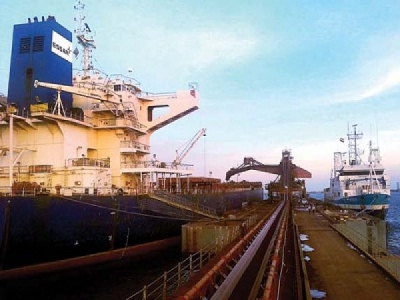
Posted on January 11, 2018
The ports arm of the Indian Essar group claimed on Monday that it will invest 500 million US dollars over the next 30 months to expand capacities at two existing Indian projects, at Hazzira and Salaya, and to build a new coal terminal in Mozambique.
The new terminal will be in the central Mozambican port of Beira. Essar Ports in August 2017 signed a 30-year concession agreement with the Mozambican government to develop the Beira coal terminal as a Public Private Partnership (PPP) project.
According to the Indian company, the project will be executed on a Design, Build, Own, Operate and Transfer (DBOOT) basis through a subsidiary, New Coal Terminal Beira, SA (NCTB SA), which is a joint venture of Essar (which will own 70 per cent) and Mozambique’s publicly owned port and rail company, CFM (which will own the remaining 30 per cent).
The project is intended to enhance the coal handling capacity of Mozambique by 20 million tonnes a year, in two phases of 10 million tonnes a year each.
The problem for Essar is that the demand for coal handling facilities in Beira has declined. The main coal exporter is the Brazilian mining giant Vale, which has switched all its coal exports away from Beira to the new port of Nacala-a-Velha, on the northern Mozambican coast.
Competition from Nacala-a-Velha cut coal exports through Beira by more than half in 2017. The initial forecast was that Beira would handle five million tonnes of coal in 2017, but the final forecast for the year cut this figure to two million tonnes.
The Indian companies operating mines in Tete province (Jindal and ICVL) are still using Beira, but their operations are on a much smaller scale than those of Vale.
The switch was not unexpected. Vale had invested heavily in a new railway from the Moatize coal basin in Tete province to Nacala via southern Malawi, and in a new custom-built coal terminal at Nacala-a-Velha.
One of the main advantages of the switch is that Nacala Bay is a natural deep water harbour that does not require dredging and so can accommodate ships of any size, while Beira requires regular dredging.
According to Vale-Mocambique, the company can now process 22 million tonnes of coal a year at its open cast mine in Moatize. Most of this will go to Nacala-a-Velha. The line from Moatize to Nacala can move 18 million tonnes of coal a year, whereas the line to Beira could only carry six million tonnes a year.
Currently five trains a day, each carrying 120 wagons of coal leave from Moatize for Nacala-a-Velha, a journey that takes about 30 hours. Each train carries 7,560 tonnes of coal, which are exported to India, Japan and Brazil, among other markets.
Essar’s investment will make sense only if Beira continues to handle all Jindal and ICVL exports, and any surplus that Vale cannot send to Nacala.
Competition is set to become tougher with plans for a new railway from Moatize to the coast of Zambezia province, where a new deep water mineral port will be built at Macuse.
Source: allAfrica





